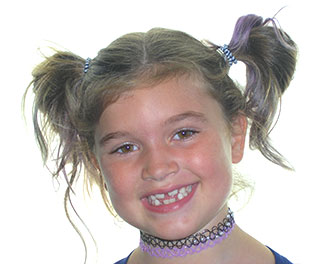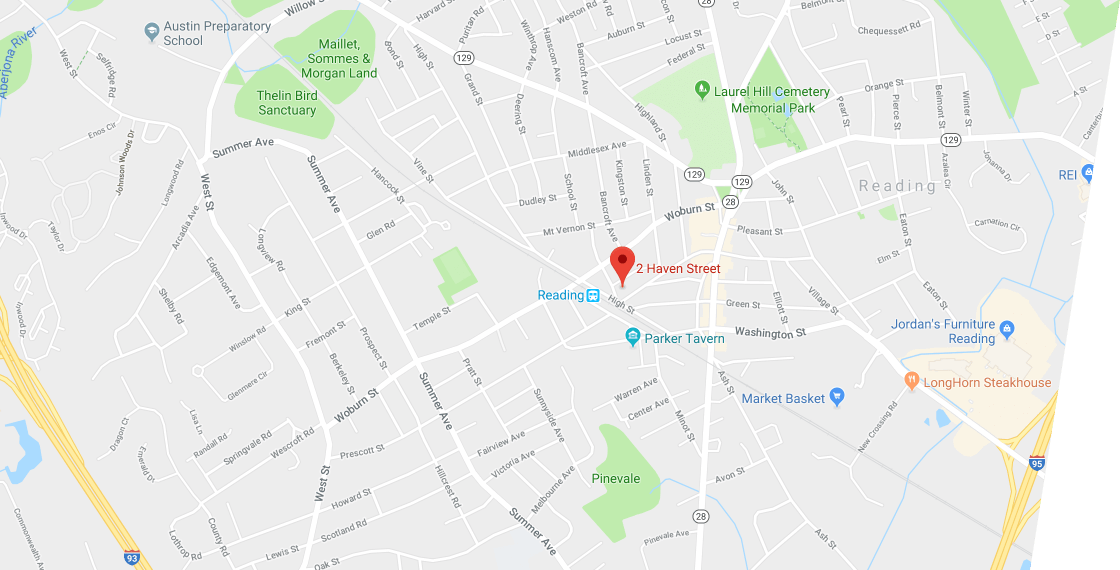Kids Orthodontics Reading, MA
Orthodontics for Children & Teenagers — What Time is the Right Time?
At our practice, each child is evaluated as an individual to determine the proper time to begin orthodontic treatment. While there is no one specific time that is right for everyone, the American Association of Orthodontists recommends that children visit the orthodontist around the age of 7.
At this stage in their growth and development, most children have both baby and adult teeth — a mix that makes it easier for an orthodontist to diagnose and correct tooth and jaw issues earlier and without resorting to surgery.
What Causes Crooked Teeth in Children?
There are many factors that can lead to misalignment of teeth in children, including:
- Early loss of baby teeth
- Teeth erupting in the wrong position
- Missing teeth
- Genetics
- Mouth Breathing
- The size of a child’s teeth
- Extended periods of thumb-sucking
- Extended use of a pacifier
- Accidents or injuries to the mouth
- Imbalance between jaw growth, jaw position and teeth
- Lack of or excess skeletal growth
Even if your child is not exhibiting any of these issues, it is smart to get them evaluated by an orthodontist experienced in children’s growth and development to ensure their teeth are emerging with proper alignment.
Why Is it Important to Get an Early Evaluation for My Child’s Teeth?
An early evaluation performed by our orthodontist can help determine if early orthodontic intervention is needed for your child. Early treatment, generally beginning around the age of eight or nine may be recommended to correct issues with the growth of the jaw such as bite issues. By treating these issues at an early age, our orthodontist can ensure that your child’s permanent teeth come in properly.
Misaligned teeth can interfere with speech patterns, make it more difficult for children to make themselves understood, and even interfere with the learning process.
Crooked teeth can also represent a hygiene problem, particularly for young children. Poor oral hygiene can result in increased instances of tooth decay, issues with gums, and additional dental issues.
Early orthodontic intervention, performed at the correct time in your child’s development, can help relieve these issues and help your child be more comfortable — and confident — as they grow.
What is the advantage of two-phase orthodontic treatment?
Two-phase orthodontic treatment is a specialized process that combines tooth straightening and physical, facial changes. The purpose of two-phase treatment is to maximize the opportunity to accomplish the ideal healthy, functional, and aesthetic result that will remain stable throughout your child's life.
Conditions Improved by Early Orthodontic Intervention
Having your child examined by a knowledgeable orthodontic specialist will determine if your child needs intervention — and pinpoint the correct time to begin treatment. Typically, early treatment of orthodontic issues can help resolve:
- Habits such as thumb sucking, tongue thrusting, and lip biting
- Speech and psychological issues due to malposition of teeth
- Sleep apnea
- Excessive spacing of teeth
- Unfavorable sequence of eruption of teeth
- Underbite
- Anterior/posterior crossbites
- Anterior open bite or the opposite (a deep, impinging bite)
- Excessive overjet of upper incisors (buck teeth)
- Moderate to severe tooth crowding
In addition, early assessment can help avoid the cost and trauma of future surgeries by facilitating the eruption of impacted teeth.
What if treatment is put off?
Putting off treatment can result in a need for more invasive treatment later in life that may not completely fix your child's smile. Early treatment is most effective for achieving lasting results.
Phase One
A Foundation for a Lifetime of Beautiful Smiles
The goal of Phase One treatment is to help the jaw develop in a way that will accommodate all of the permanent teeth and improve the way the upper and lower jaws fit together. Children often exhibit early signs of jaw problems as they grow and develop. An upper jaw that is growing too much or is too narrow can be recognized at an early age. If children over the age of six are found to have this jaw discrepancy, they are candidates for early orthodontic treatment. Also, if children around the age of eight have crowded front teeth, early treatment can prevent the need to extract permanent teeth later.
-
Planning now can save your child's smile later
Children benefit tremendously from early-phase treatment. Receiving early treatment may prevent the removal of permanent teeth later in life, or the need for surgical procedures to realign the jaws. -
Making records to determine your child's unique treatment
Orthodontic records will be necessary to determine the type of appliances to be used, the duration of treatment time, and the frequency of visits. Records consist of models of the teeth, X-rays, and photographs. During your child's initial consultation, the doctor will take records to determine if early treatment is necessary.
Resting Period
In this phase, the remaining permanent teeth are left alone as they erupt. Retaining devices may not be recommended if they would interfere with eruption. It is best to allow the existing permanent teeth some freedom of movement. A successful first phase will have created room for permanent teeth to find an eruption path. Otherwise, they may become impacted or severely displaced.
Monitoring the teeth's progress
At the end of the first phase of treatment, teeth are not in their final positions. This will be determined and accomplished in the second phase of treatment. Selective removal of certain primary (baby) teeth may be in the best interest of enhancing eruption during this resting phase. Therefore, periodic recall appointments for observation are necessary, usually on a six-month basis.
Phase Two
Stay healthy and look attractive
The goal of the second phase is to make sure each tooth has an exact location in the mouth where it is in harmony with the lips, cheeks, tongue, and other teeth. When this equilibrium is established, the teeth will function together properly. Phase Two usually involves full upper and lower braces.
At the beginning of the first phase, orthodontic records were made and a diagnosis and treatment plan was established. Certain types of appliances were used in the first phase to correct and realign the teeth and jaw. The second phase begins when all permanent teeth have erupted, and usually requires braces on all the teeth for an average of 24 months. Retainers are worn after this phase to ensure your child retains his or her beautiful smile.
Why Your Child Should Visit an Orthodontist
Children experience many changes in their mouth due to the transition from baby to adult teeth. Seeing an orthodontist early on can help correct improper tooth alignment to promote better oral health, allow natural and unimpeded chewing function, and contribute to clearer speech. In addition, a beautiful smile that brings the teeth into proportion with lips and face can have an enduring impact on a child’s emotional and psychological health.
If your child is ready to experience the confidence of a beautiful new smile, contact our office at (781) 944-7970 to make an appointment for a consultation today!




